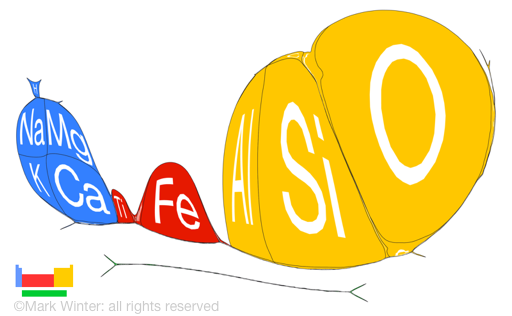Zirconium - 40Zr: geological information
Zirconium is never found as the free metal. The main ore is Zircon (ZrSiO4) and this is found in deposits in Australia, Brazil, India, Malysis, Russia, and the USA. All these minerals contain a little hafnium as well and the separation of the two is difficult.
Zirconium has been found in the spectra of S-type stars and has been identified in the sun and meteorites. Lunar rock samples show a surprisingly high zirconium oxide content as compared to rocks from earth.
Abundances of zirconium in various environments
In this table of abundances, values are given in units of ppb (parts per billion; 1 billion = 109), both in terms of weight and in terms of numbers of atoms. Values for abundances are difficult to determine with certainty, so all values should be treated with some caution, especially so for the less common elements. Local concentrations of any element can vary from those given here an orders of magnitude or so and values in various literature sources for less common elements do seem to vary considerably.
| Location | ppb by weight | ppb by atoms |
|---|---|---|
| Universe | 50 | 0.7 |
| Sun | 40 | 0.5 |
| Meteorite (carbonaceous) | 6700 | 1600 |
| Crustal rocks | 130000 | 30000 |
| Sea water | 0.026 | 0.0018 |
| Stream | 3 | 0.03 |
| Human | 50 | 3 |


The chart above shows the log of the abundance (on a parts per billion scale) of the elements by atom number in our sun. Notice the "sawtooth" effect where elements with even atomic numbers tend to be more strongly represented than those with odd atomic numbers. This shows up best using the "Bar chart" option on the chart.

